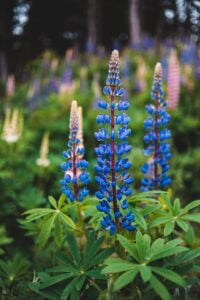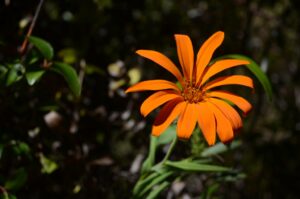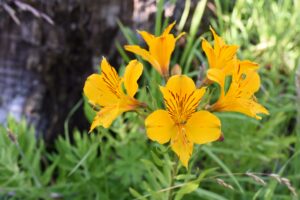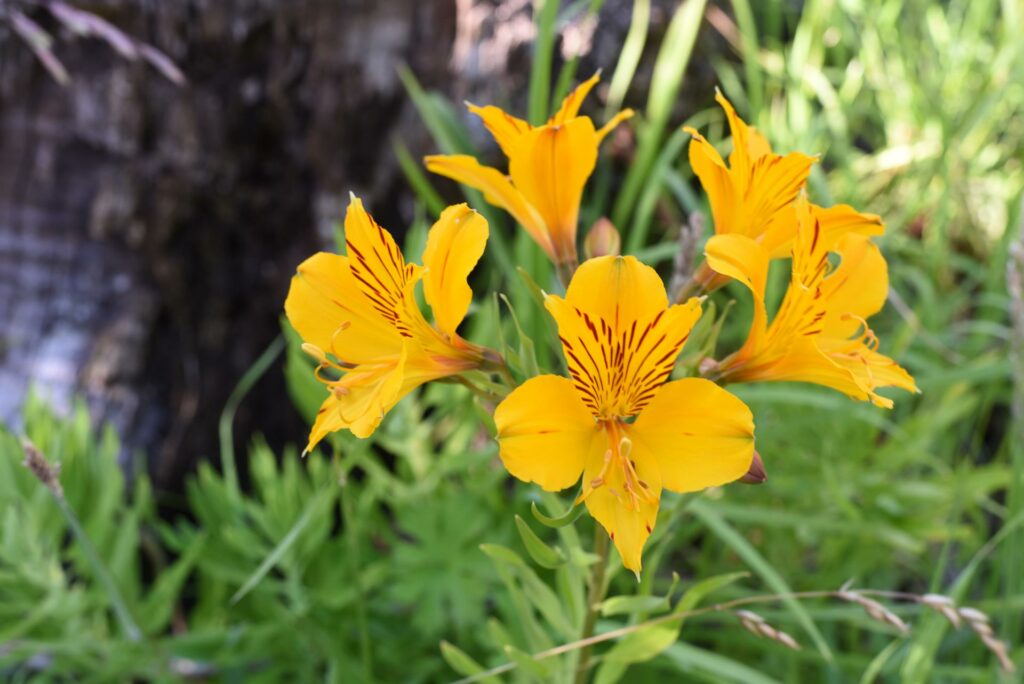Lupine, scientifically known as Lupinus, is a native plant that blooms in the landscapes of Patagonia, a region located at the southern tip of South America, shared by Argentina and Chile. This species, belonging to the legume family, is cherished not only for its lush beauty but also for its vital ecological role in these ecosystems and its nutritional properties.
How long does it take for lupine to bloom?
The time it takes for lupines to bloom and the duration of their flowering can vary depending on the lupine species and specific growth conditions, such as climate and soil. However, in broad strokes:
- Time to bloom: lupines typically bloom in their first growing season, which can occur approximately between 8 and 12 weeks after being sown from seeds. Some species might take a little more or less time, but generally, lupines tend to bloom early in their lifecycle.
- Duration of flowering: lupine flowering can last from several weeks to approximately a month, depending on weather conditions and the care the plants receive. During this time, the plants will produce showy clusters of flowers ranging in colors from white to shades of blue, pink, and purple.
- Plant fifespan: after flowering, lupines will produce pods containing seeds. Once the seeds are mature, the plants naturally die. In some cases, lupines can be perennial plants, meaning they grow again in the next growing season from the same root. However, this varies by species and climate.
It’s important to note that these timelines are approximate and can vary. For specific information about a particular lupine species and its growth cycles, I recommend consulting specific resources or gardening guides related to that specific variety.

An interesting fact for your visit to Patagonia
When they have mature seeds and someone approaches them, they explode! This natural phenomenon occurs when the seed capsules are touched, creating a sound similar to that of a rattlesnake, almost like a musical melody in the midst of nature. We’re excited about this peculiarity and plan to update this article soon with audio capturing this fascinating phenomenon.
Stay tuned to hear this incredible natural wonder!
Lupines: small seed, great benefits
Lupines, also known as chochos, altramuces, or tremosos, are leguminous plants native to the Mediterranean and America. With around 200 species, these umbrella-like stalks boast a diverse range of colors, from white to deep blue, giving them high ornamental value.
The fruit of the lupine is a legume in yellow or white, similar to corn, and stands out for its high nutritional value. They are an authentic source of energy due to their high content of carbohydrates, amino acids, and high-quality plant proteins.
Studies from the Carillanca Agricultural Research Institute (INIA) have shown that lupine stands out in protein content compared to other legumes like lentils, peas, beans, and chickpeas, whose protein levels range between 21% and 25%. Depending on the species, lupine approaches soybean protein content, which is around 39%, and can even surpass it.
This legume, traditionally used as livestock feed, has been a vital resource for families in times of famine, providing the necessary nutritional values for survival. Nowadays, lupine is considered a “superfood,” comparable to quinoa and avocado in terms of benefits but is not used as food in Argentina, although it is in Chile.
Lupine, in addition to providing all essential amino acids, contains important antioxidants such as lutein, zeaxanthin, and beta-carotene, as well as phytosterols, which act as antioxidants. These properties help regulate cholesterol levels and are effective in treating hypertension and preventing cardiovascular diseases.



